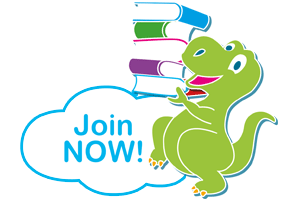We currently focus on a variety of book ranges:
(The books mentioned below are just a few examples, but we offer a larger variety of books and the books you receive may differ from the ones below)
Bright Baby (Priddy Books) - Board books with Cute animals with fur and feathers for little hands to feel, padded books with tough, sturdy pages for little hands to turn, grip books with a shaped carry handle to grip and hold.
Baby Basics (Priddy Books) - Chunky, padded board book of favourite animals for babies with bright, sharp photography and clear text labels to identify each picture. Perfect for developing word/picture association. Also introducing first words with clear photography of food, toys, and more, simple text labels and a question on each page to prompt discussion An ideal addition to any child's first learning library.
Pricing
You should expect to receive 2 of the following books per child each month.
Price for 1 child: R160pm
Price for 2nd child: R109pm
Price for 3rd child: R99pm |
 |
1. Grip Books
• A first book for babies about a key times in their day - playtime & sleeptime
• Colourful collection of photographs encourages object recognition, text labels aid first word and picture association skills
• Shaped carry handle to grip and hold |
|
2. Board Books
• Bright board book with photographs of familiar objects and animals
• Fun way for babies and toddlers to learn first words
• Soft, padded covers are great for little hands to hold |
|
3. Padded board books
• Chunky, padded board book of favourite animals, colours, numbers & words for babies
• With bright, sharp photography and clear text labels to identify each picture
• Perfect for developing word/picture association
• Chunky board books with soft-to-touch, padded cover
• Covers familiar and new words, from food to toys, animals to clothes, and more!
• An essential addition to any child's early learning library - with eye-catching design, simple text labels, and a question on each page to prompt discussion |
|
4. Touch and Feel Books
• Interactive first book about bathtime, bedtime, number, animals, shapes words etc for babies
• Pages feature bright photographs to look at, simple first words to read, and fun touch-and-feel textures for little fingers to explore
• Stimulates developing senses and encourages children to look, touch and listen |
|
| |
 |
Its important to start with a good foundation:
Infancy (Up to Age 1) Kids usually begin to:
• imitate sounds they hear in language
• respond when spoken to
• look at pictures
• reach for books and turn the pages with help
• respond to stories and pictures by vocalizing and patting the pictures
Babies/Toddlers (Ages 1-3) Kids usually begin to:
• answer questions about and identify objects in books — such as "Where's the cow?" or "What does the cow say?"
• name familiar pictures
• use pointing to identify named objects
• pretend to read books
• finish sentences in books they know well
• scribble on paper
• know names of books and identify them by the picture on the cover
• turn pages of board books
• have a favourite book and request it to be read often
• respond to stories and pictures by vocalizing and patting the pictures
Baby Reading Milestones 6 to 12 Months During this period, babies become less interested in mouthing books and more interested in the story. You can promote your baby’s interest in books by looking at books with him and talking about the pictures, especially those that interest your baby. Invite your 8- or 9-month-old baby to turn the pages. If you are raising your baby to become bilingual, this is a good time to introduce objects to your baby and tell her the words for them in both languages.
12 to 18 Months Babies delight in reading together with adults. Your baby will turn pages and name pictures of fams of familiar objects. She may begin to enjoy books that tell simple stories. Because babies are natural explorers, they love books like Pat the Bunny, which they can touch and sniff while listening to the story.
Baby Writing Milestones Babies are just learning to use their hands. At first, your baby will not be able to grasp objects by himself, but he will awkwardly grasp a toy placed in his palm. Your 4-to 6-month-old baby can reach for and grasp things he wants. Babies will explore objects by putting them in their mouths.
6 to 12 Months Babies gain more control over their hands. At this age, your baby is able to pass objects from hand to hand and may enjoy ripping and pulling materials. She is able to pick up very small objects using her thumb and forefinger. Babies’ hand movements become more precise, allowing them to feed themselves finger food and place rings on a post.
12 to 18 Months Babies have developed the hand skills necessary for grasping writing tools and making marks on paper. Only at the very end of infancy, at 17 or 18 months, will your baby begin to become interested in writing. You should not expect pictures or even “colouring,” let alone letters, from your baby. By scribbling, your baby explores what he can do with crayons and paper and tries to imitate what he sees older children and parents do.
 Add to Favourites
Add to Favourites  Print this Article
Print this Article
Also Read


![]() Add to Favourites
Add to Favourites  Print this Article
Print this Article